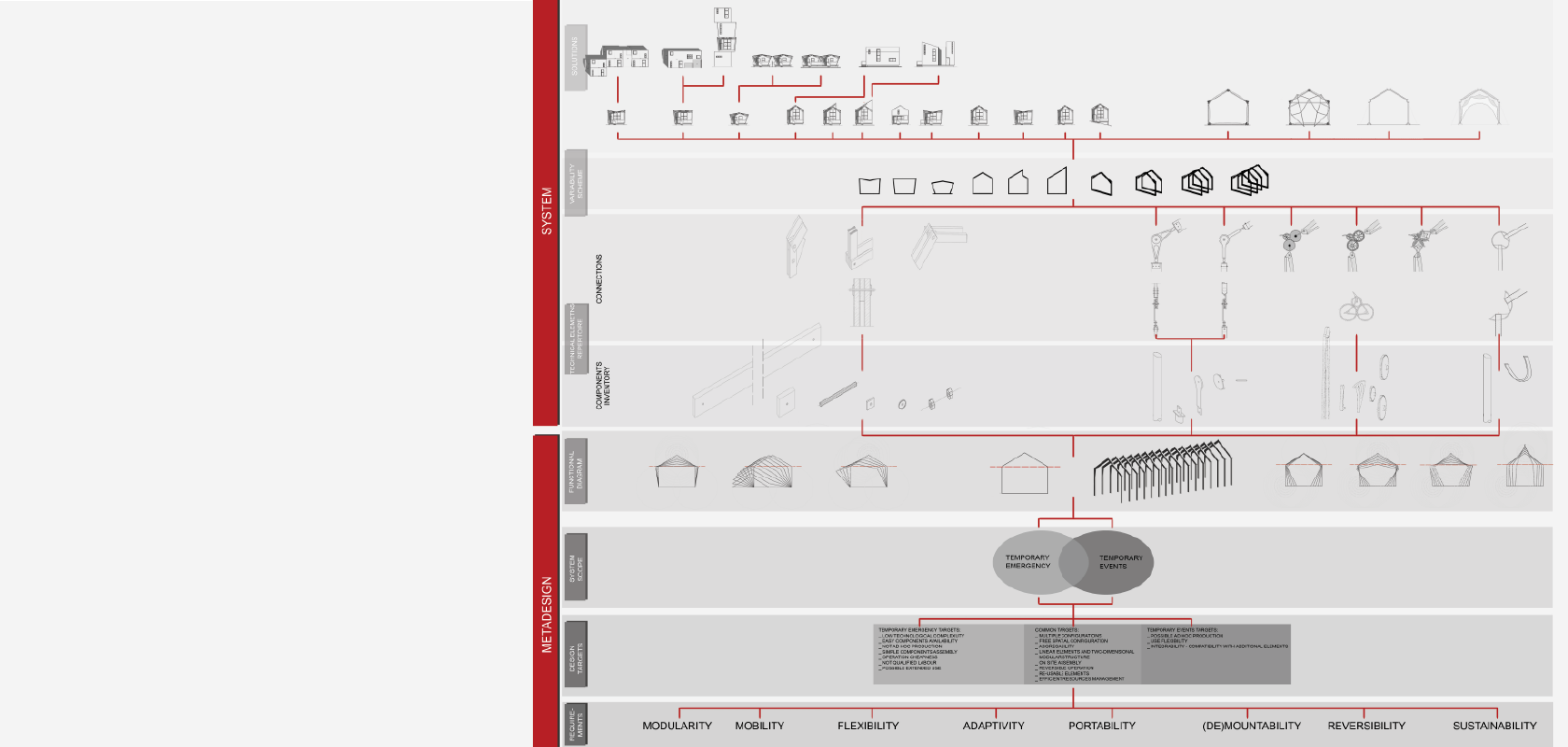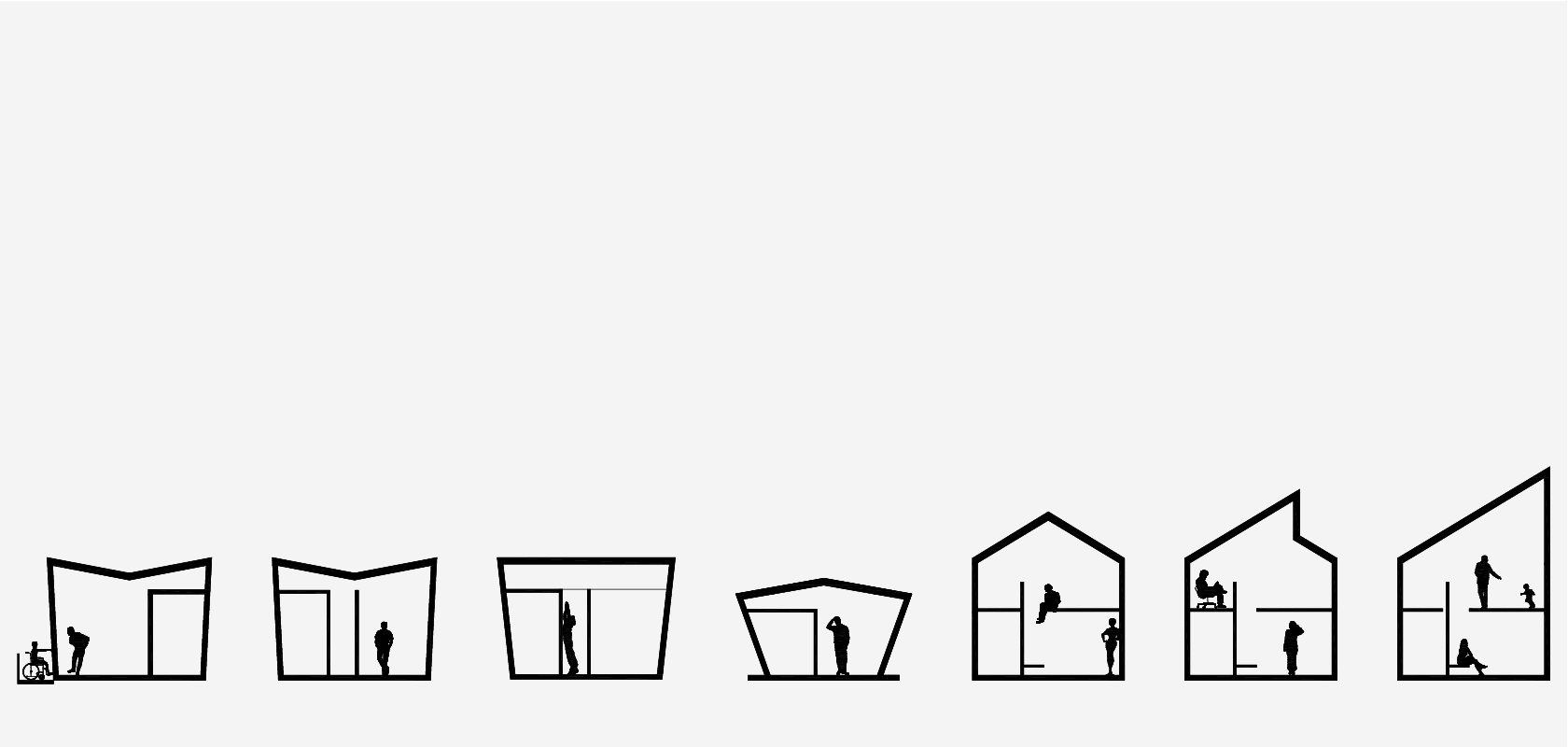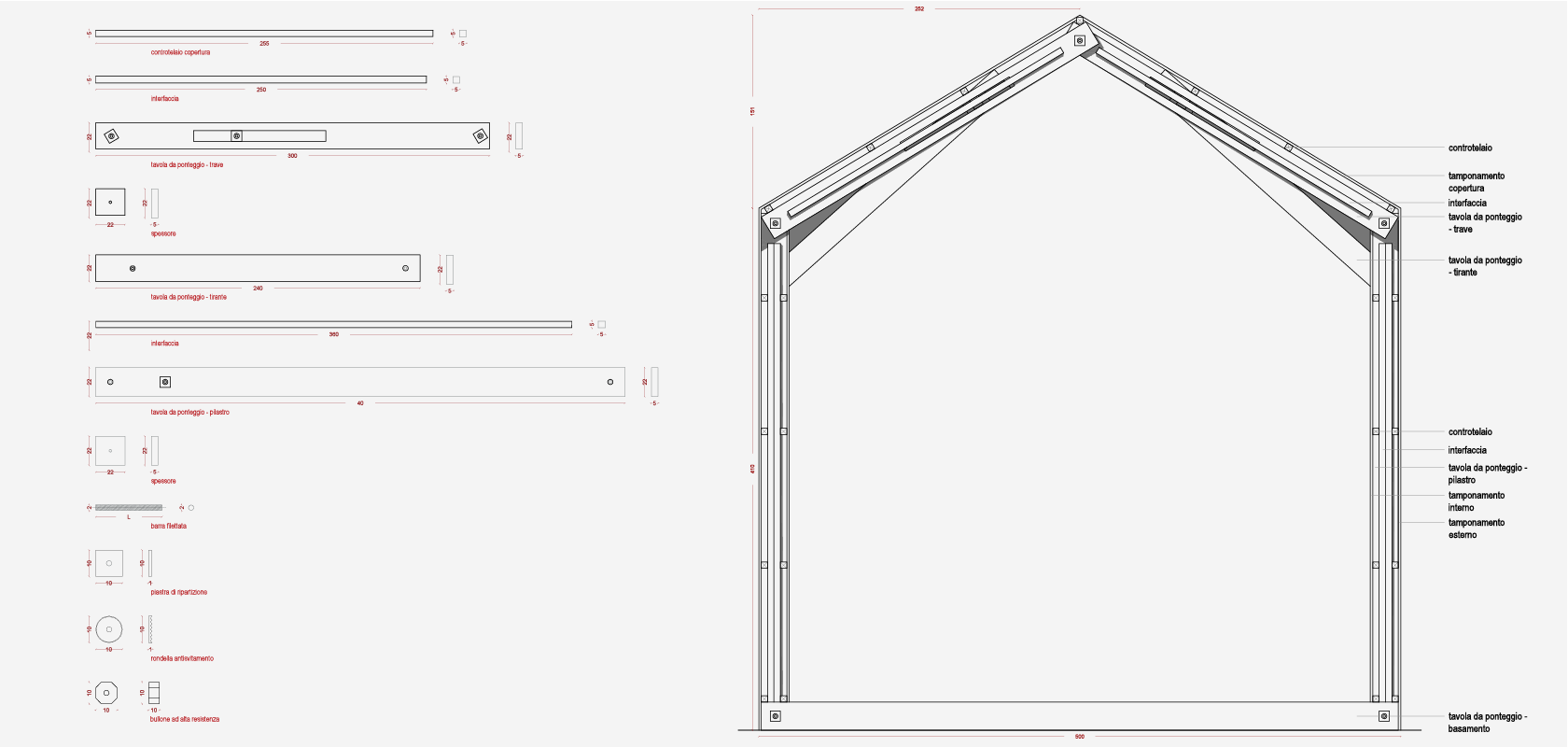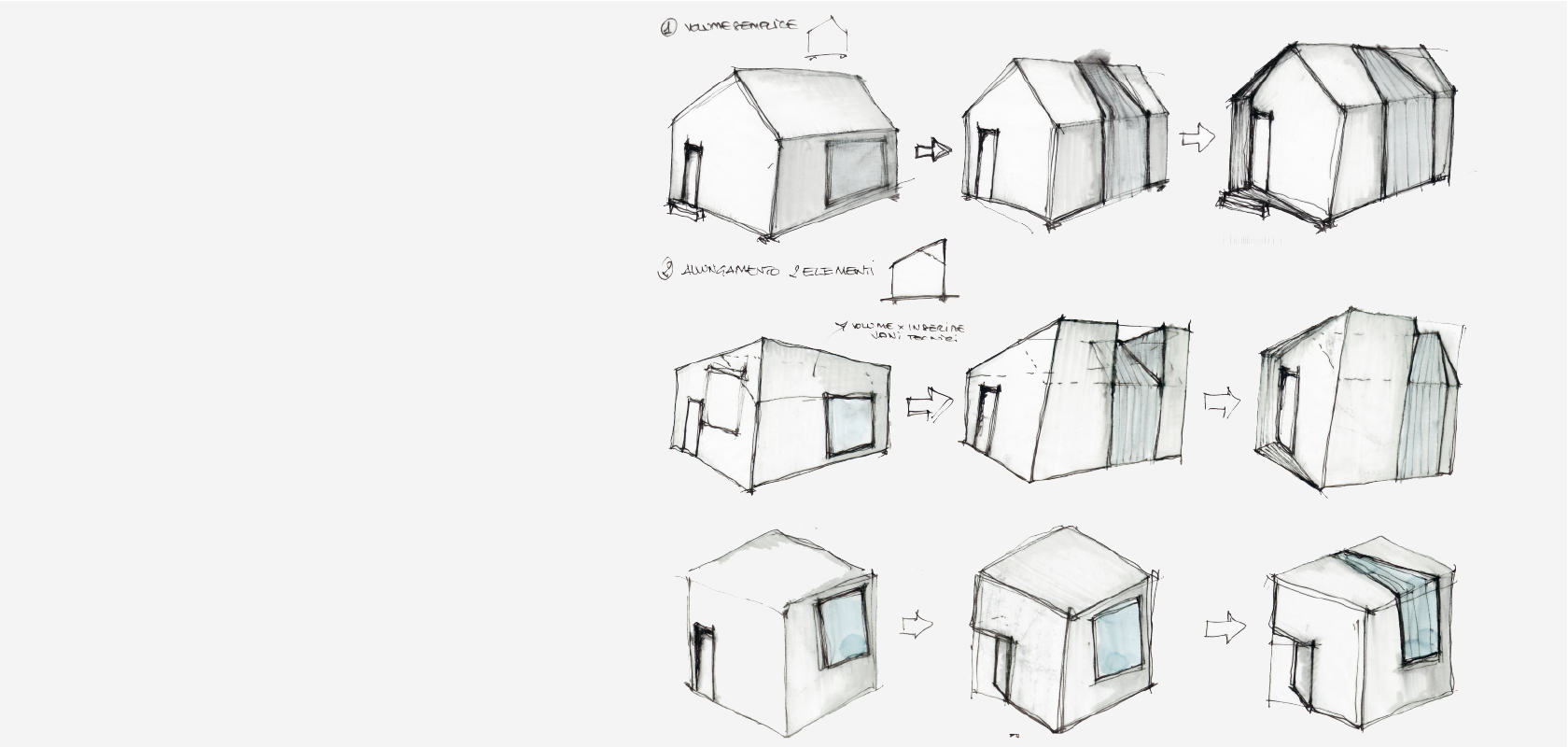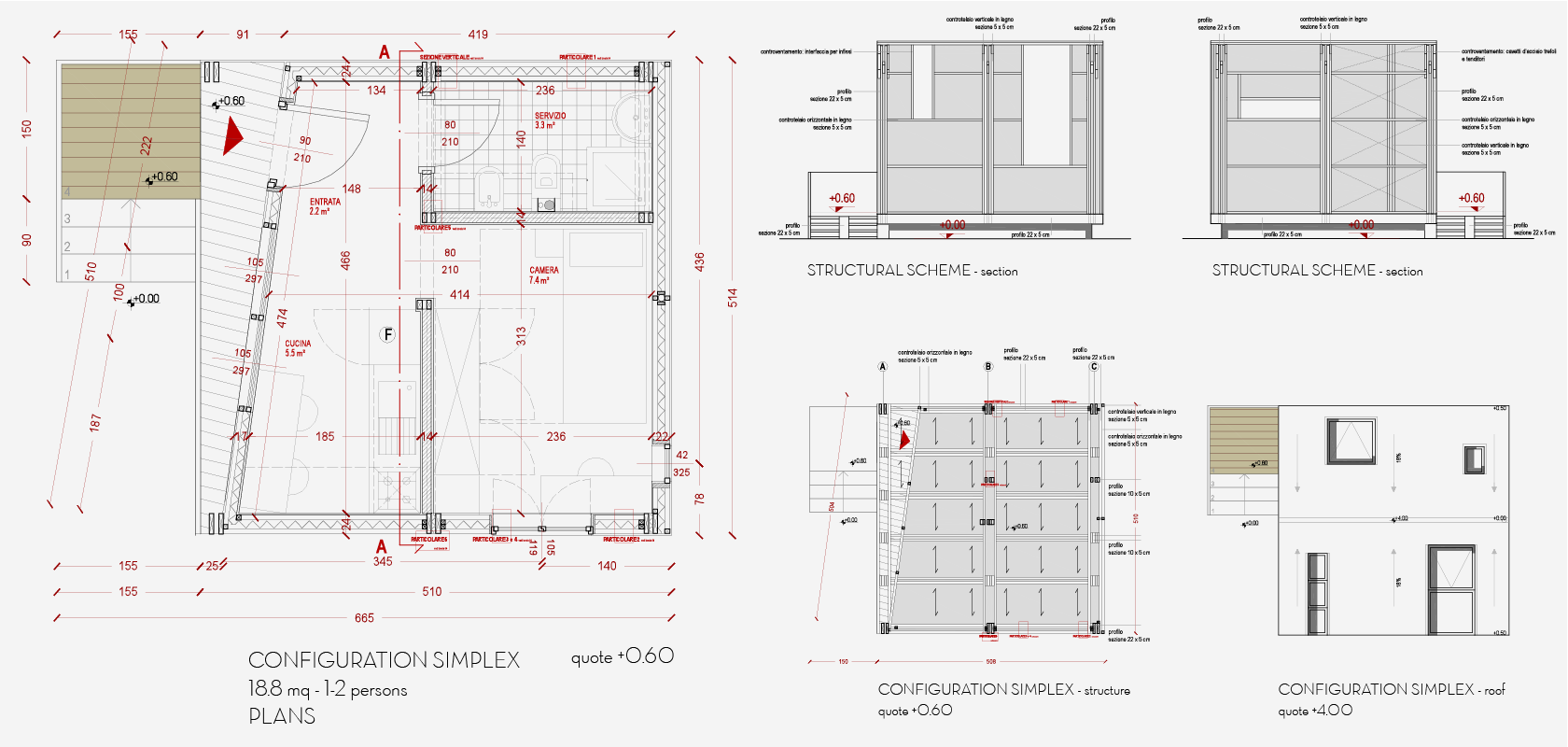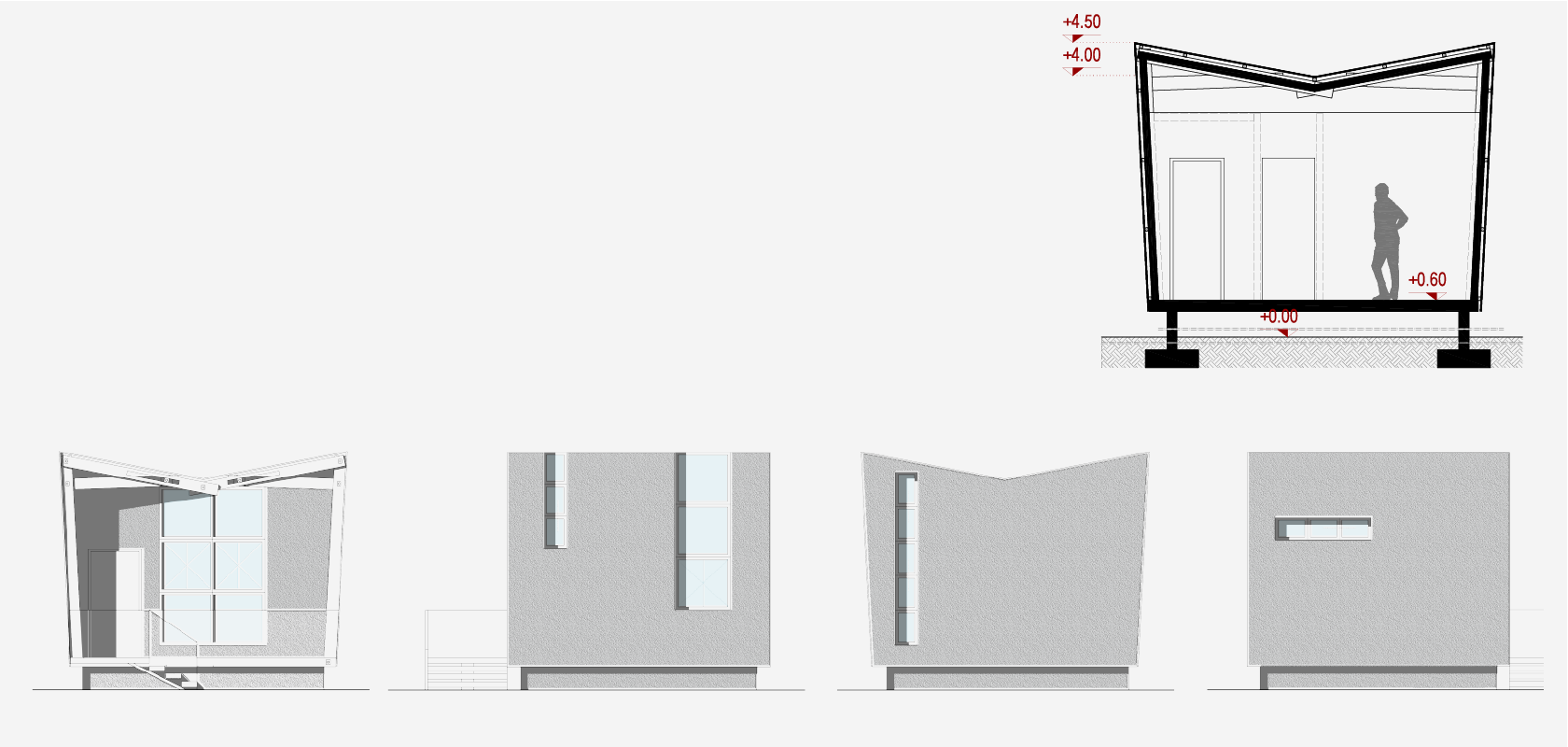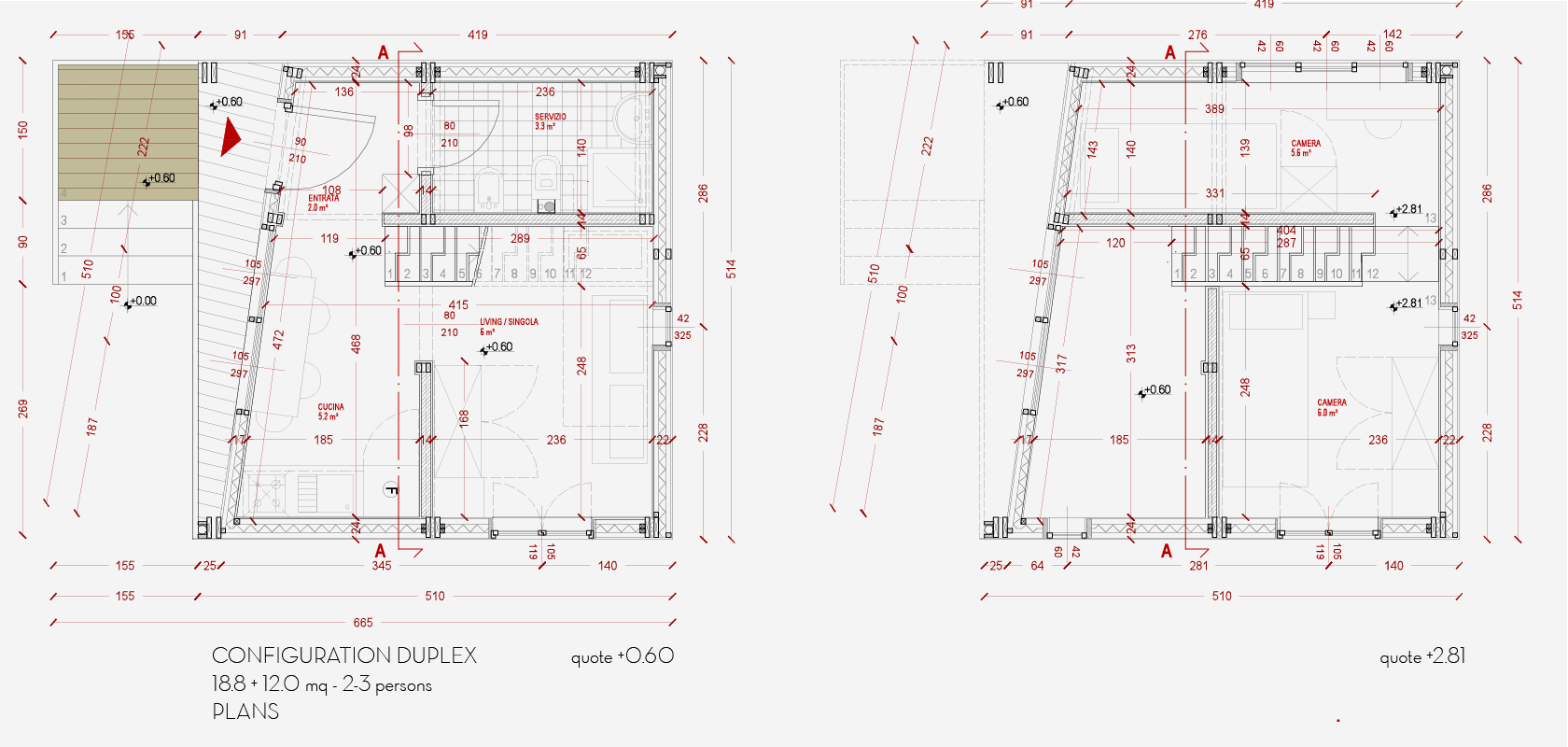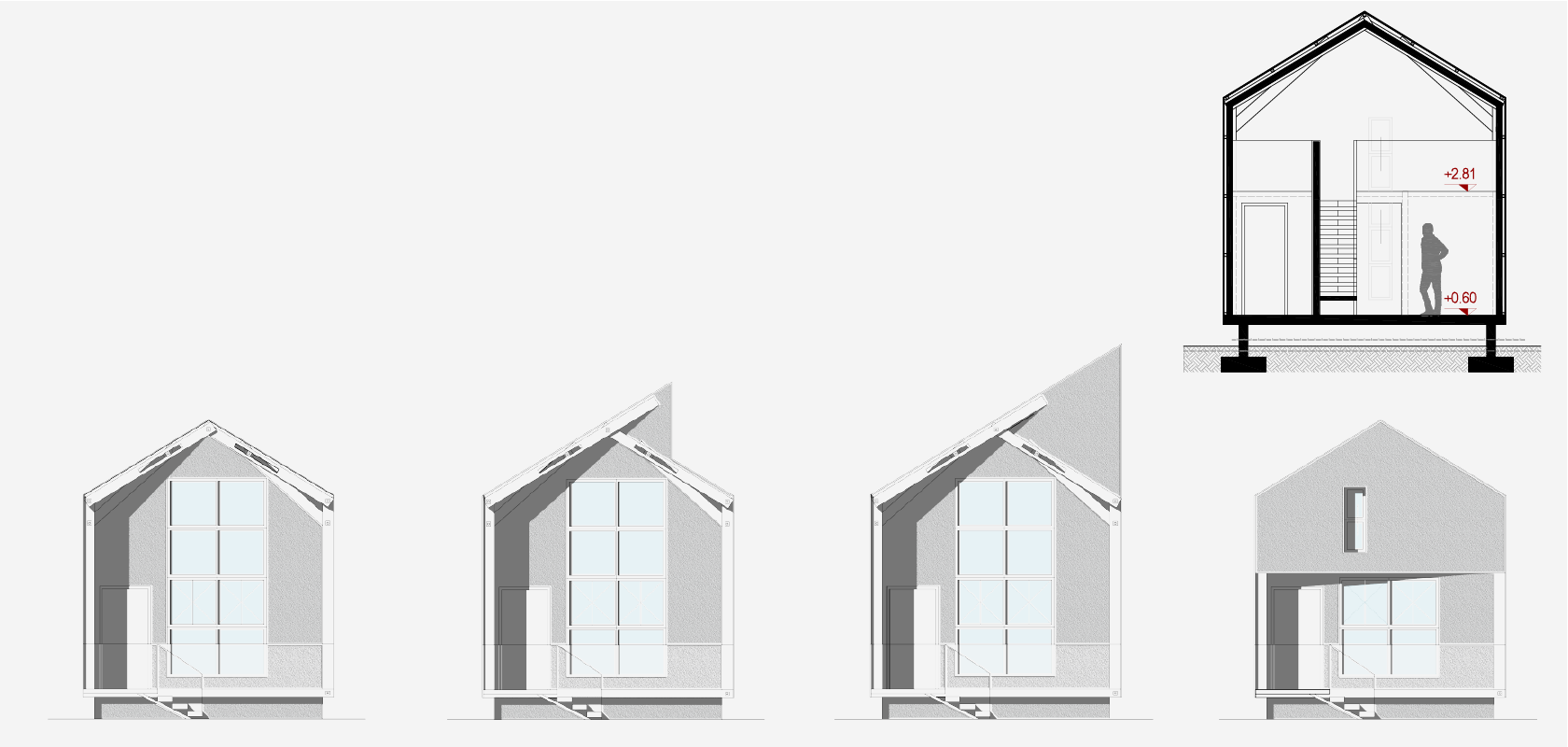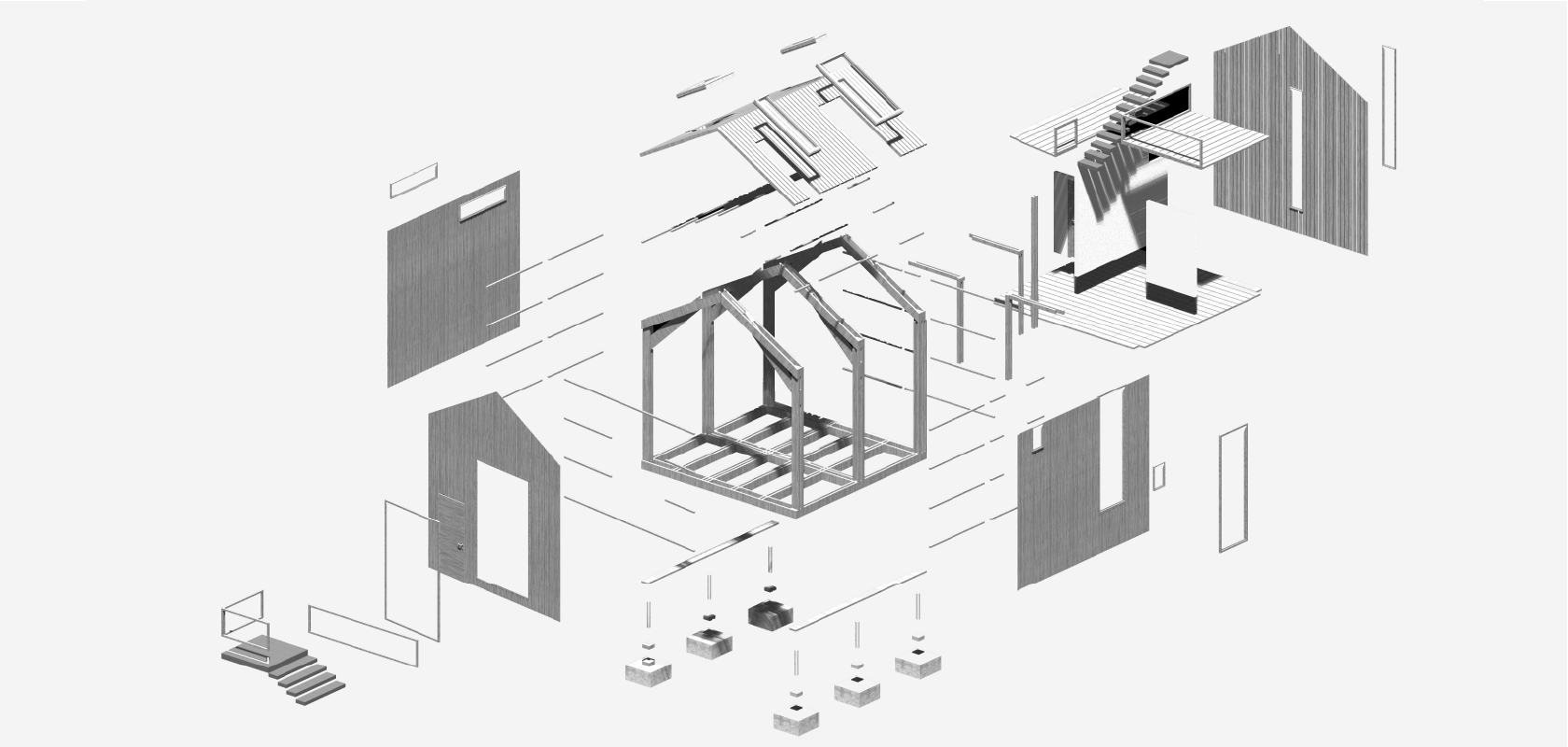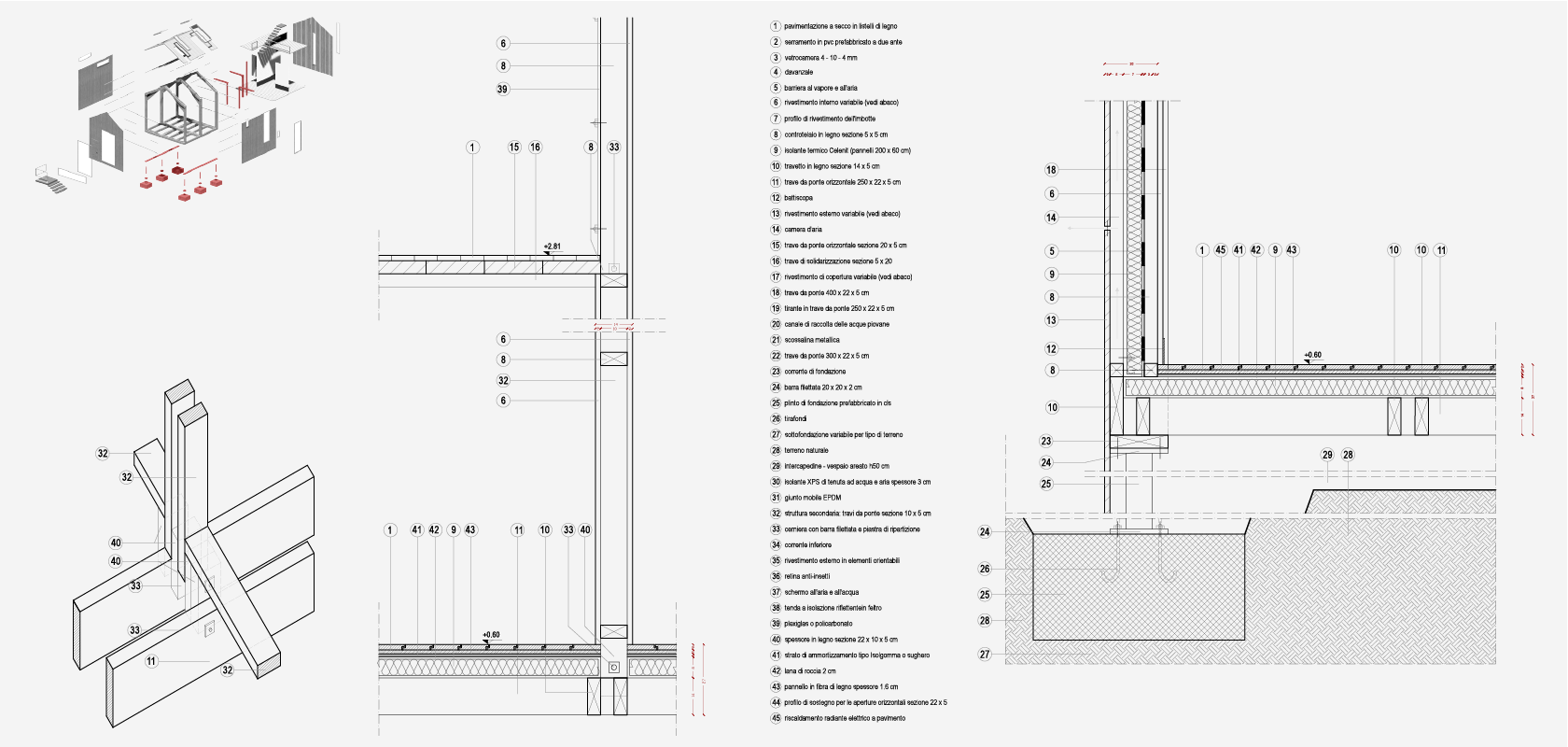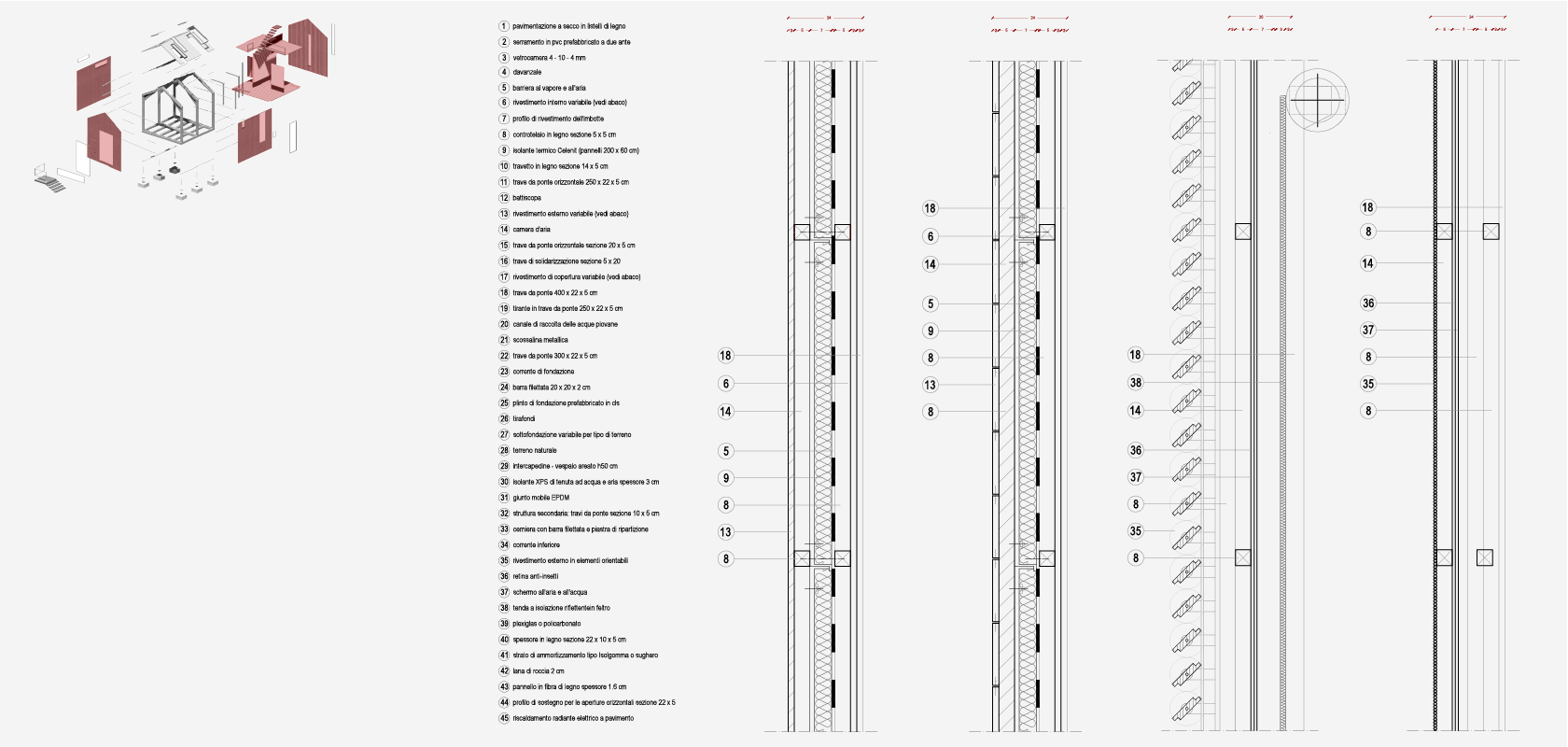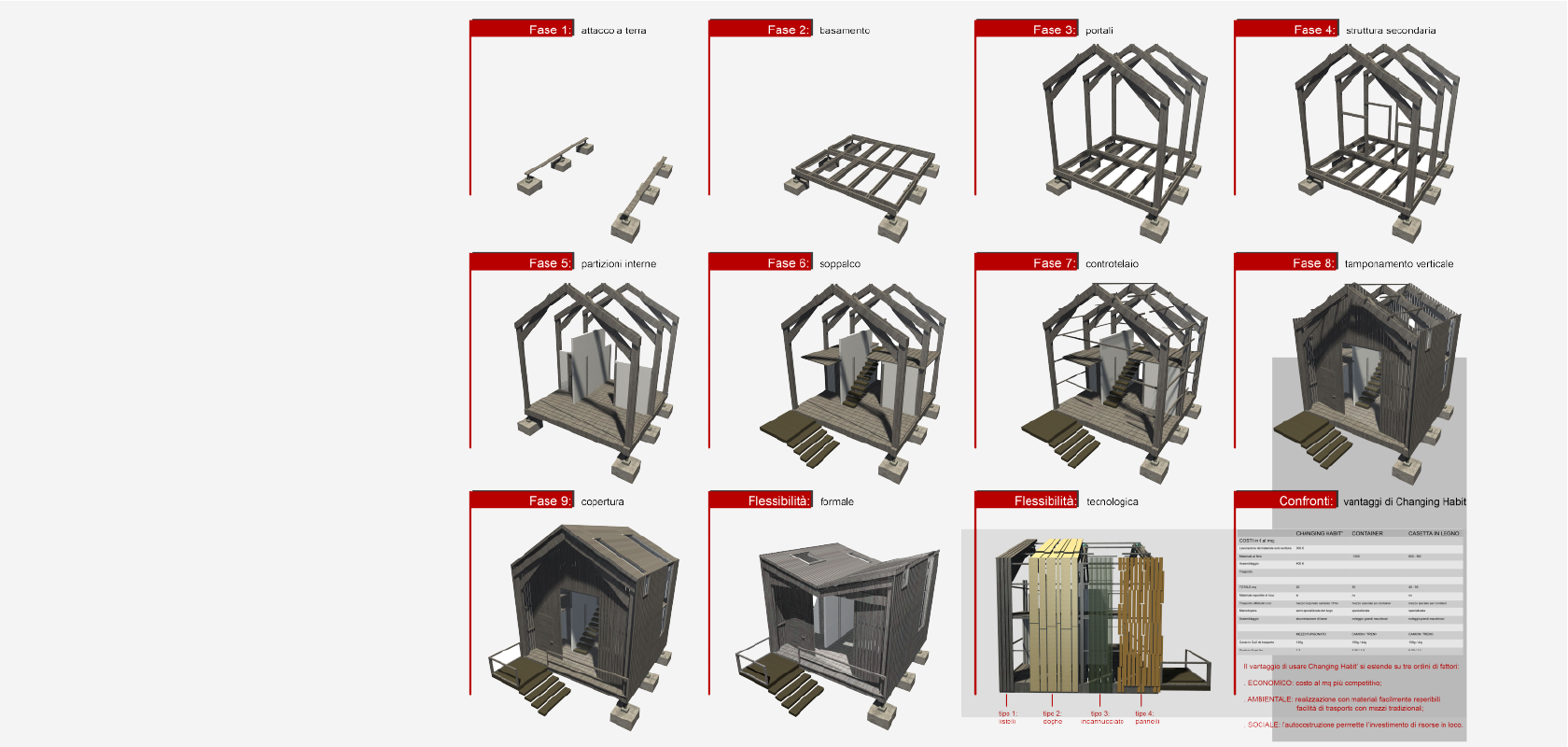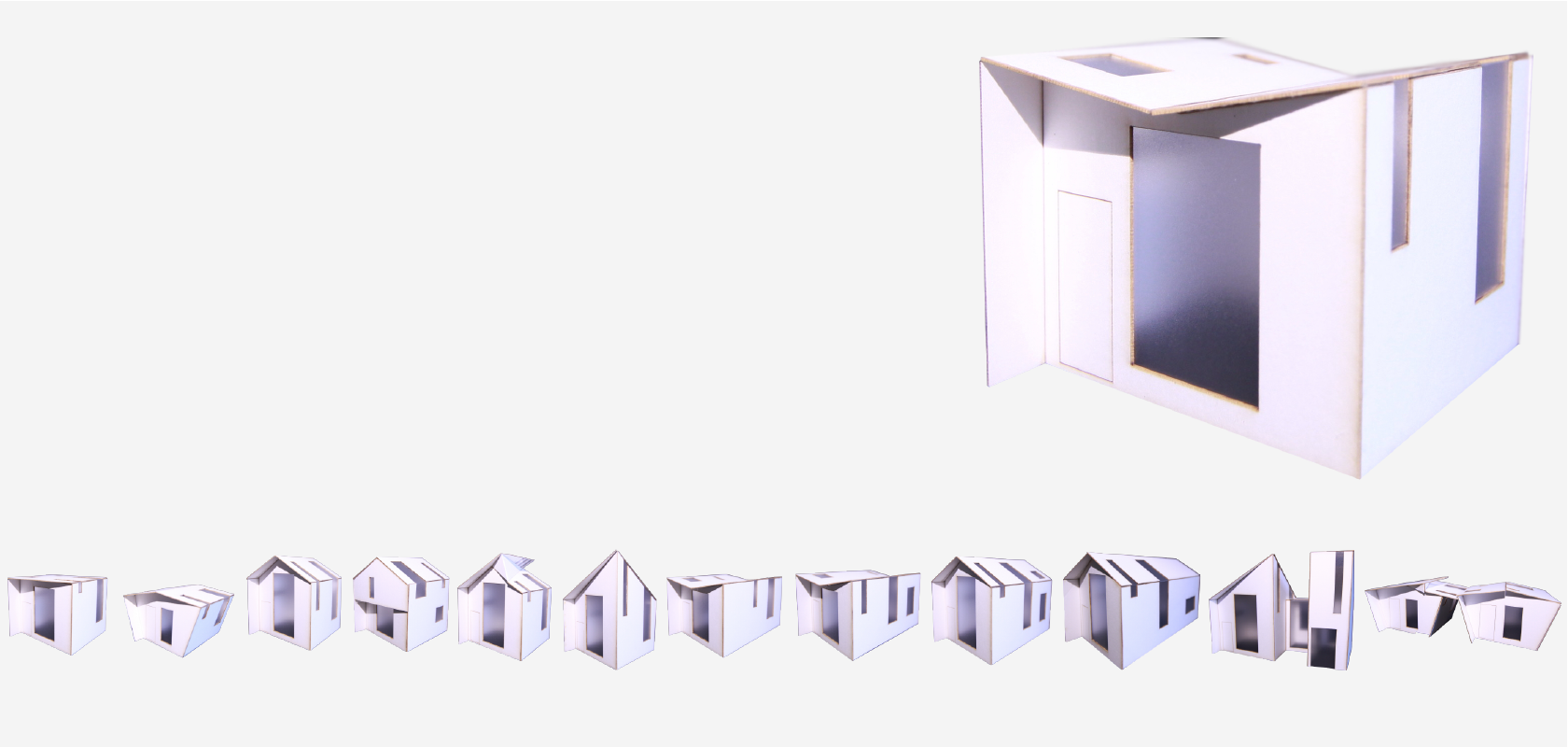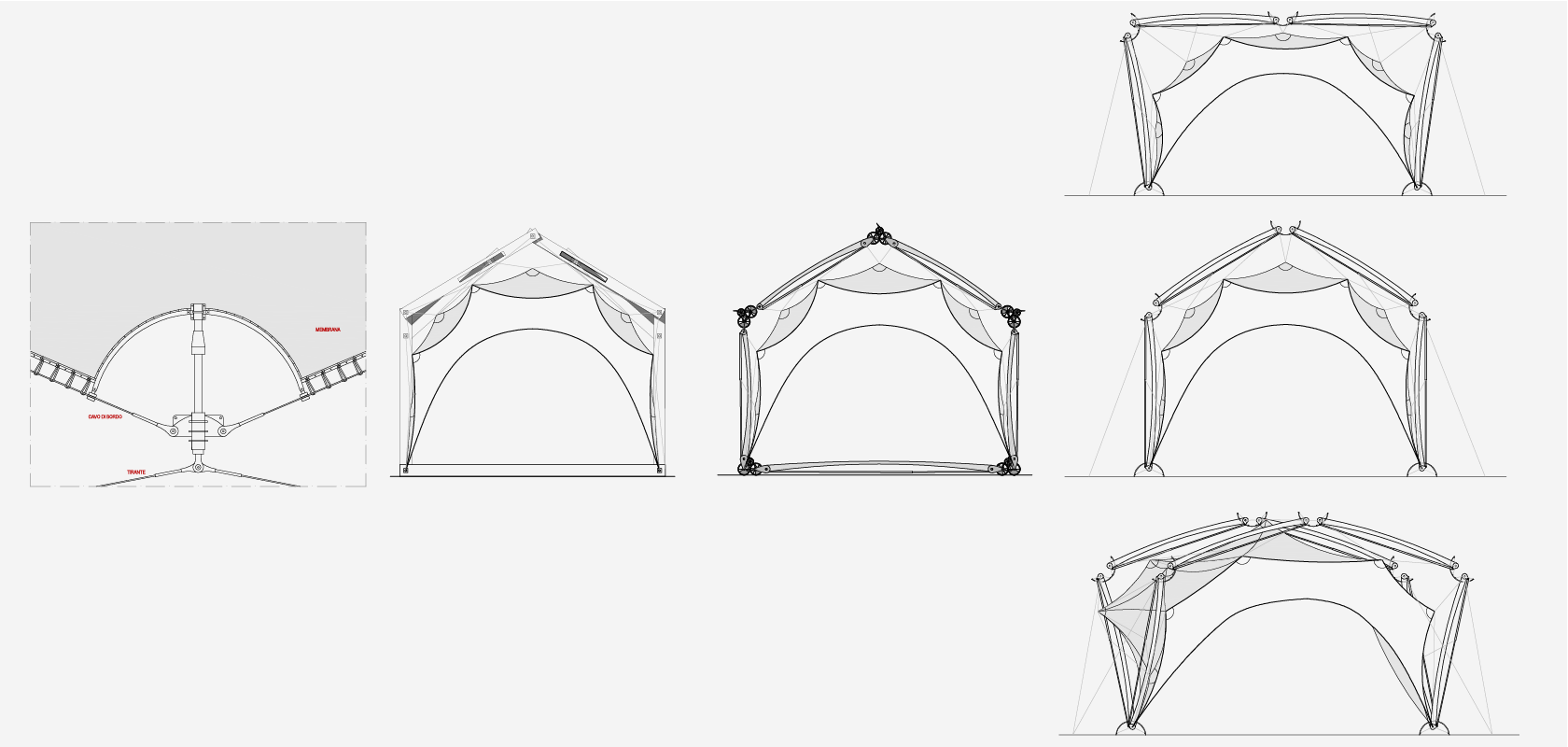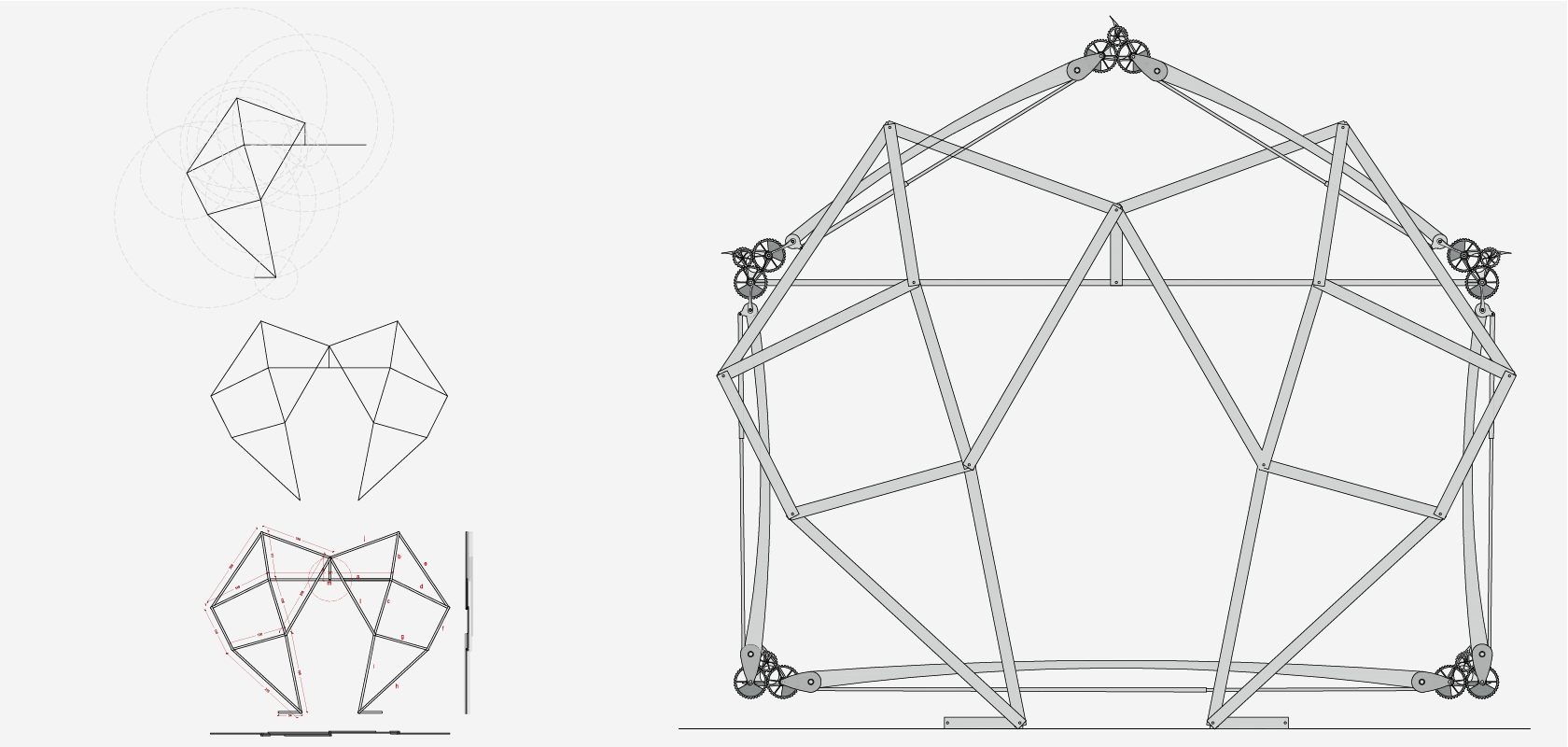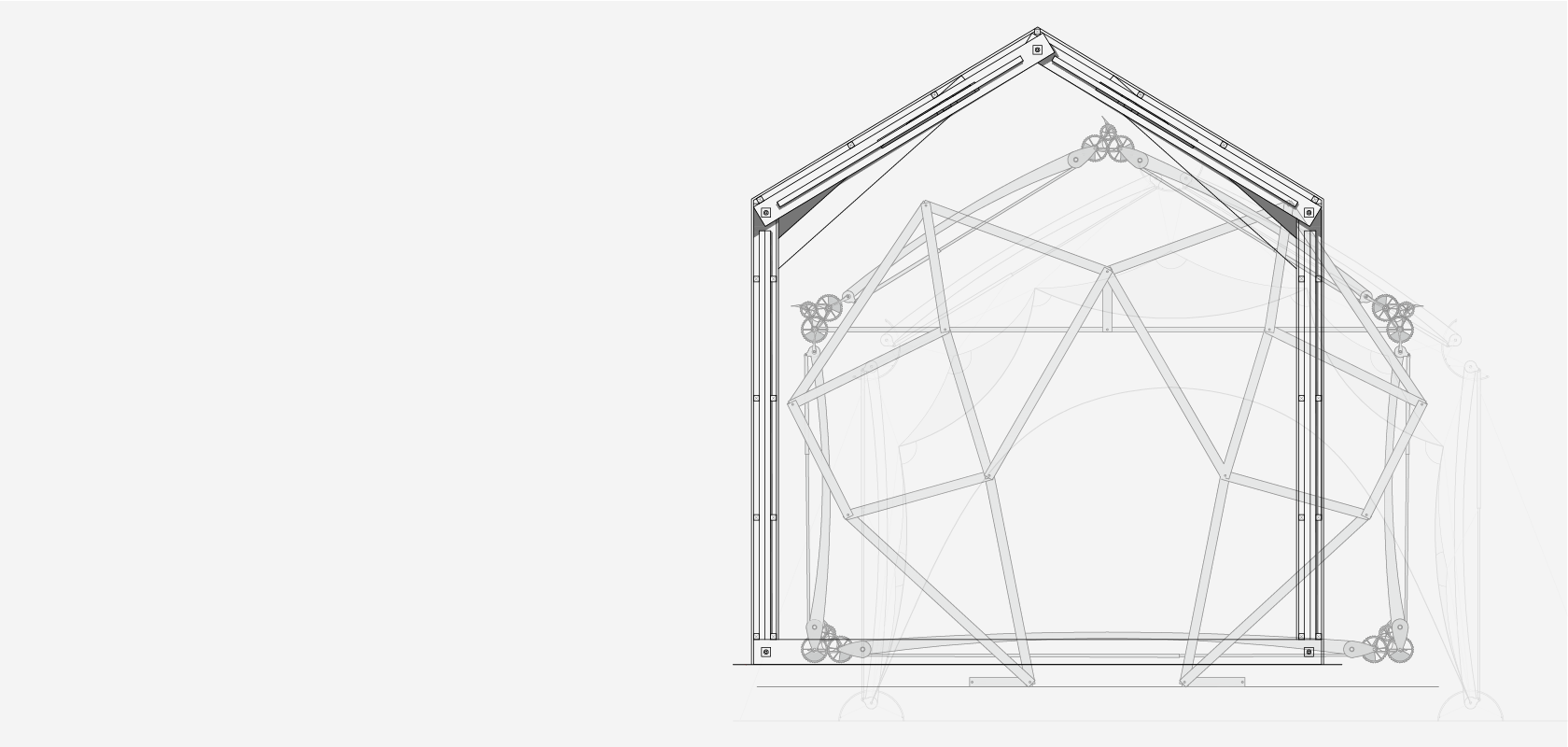- Type: Thesis
- Location: Everywhere
- Year: July 2011
- Featured on: XXXVIII IAHS World Congress on Housing, Istanbul, Turkey, April 2012 + International Journal for Housing Science and its Applications, April 2012
About
Operating in the field of temporary constructions, the aim is to develop a project that excludes the idea of a completely defined module (which implies a huge waste of resources) choosing instead to develop a system with changing and adaptable configurations. The concept phase brings to the design of an assembly kit composed of a limited number of simple elements, and that, considering the whole life cycle, is characterized by low costs, reversibility, recycling or reuse of the entire structure or of some of its elements. Finally, the project, called Changing Habit, consists basically of a two-dimensional mobile frame, formed by bars and connections: thanks to few linear elements characterized by small size, it is possible to obtain a structure that is replaceable into different kinds of spaces and that can assume multiple configurations. The aim is to achieve the minimum complexity with a system that, using the least possible amount of material, can convey multiple and variable spaces, with very few movements. Moreover, Changing Habit can be employed in different cases of temporary situations: in fact, the system is based on a structure that is mobile itself, in its parts, in its different configurations.

